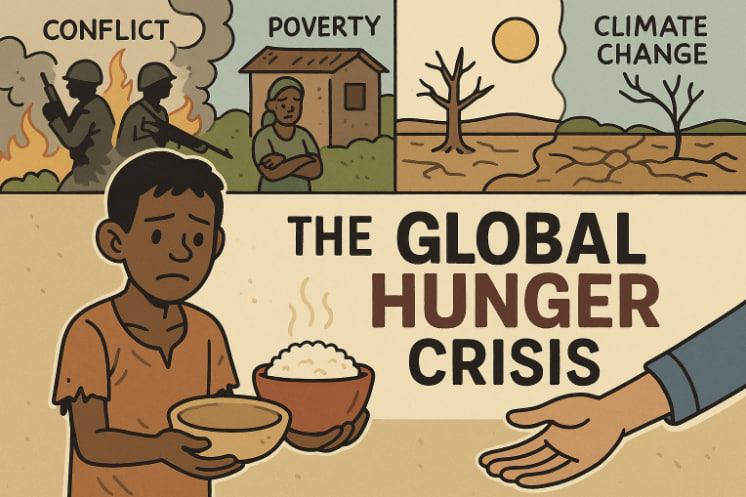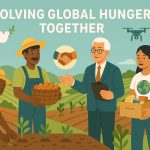Despite technological and agricultural advances, over 700 million people around the world still go to bed hungry every night. Hunger isn’t caused by a lack of food—there is enough produced globally to feed everyone. Instead, inequality, conflict, poverty, climate change, and poor infrastructure are the main drivers of this worsening global crisis.
What Is Hunger?
Hunger means more than just skipping a meal. It includes:
- Undernourishment: Not getting enough calories to maintain energy and health
- Malnutrition: A diet lacking in vital nutrients (like iron, protein, or vitamins)
- Chronic hunger: Long-term food insecurity that stunts growth, weakens immunity, and leads to premature death
Children are the most vulnerable. Every year, over 3 million children die from hunger-related causes—one child every 10 seconds.
Where Is Hunger Most Severe?
Hunger is worst in areas facing poverty, conflict, and climate vulnerability:
- Sub-Saharan Africa: Highest rates of chronic hunger
- South Asia: Widespread child malnutrition and underweight rates
- Conflict zones: Yemen, Syria, Sudan, and parts of the Sahel
- Emerging crises: Afghanistan, Gaza, Haiti, and Venezuela
Even in wealthier nations, hidden hunger exists—families may be unable to afford nutritious food consistently.
Main Causes of Global Hunger
1. Poverty
- The root cause of hunger. People without money can’t afford food, even when it’s available.
2. Conflict
- Wars disrupt farming, trade, and humanitarian aid.
- Food is often used as a weapon of war.
3. Climate Change
- Droughts, floods, and storms destroy crops and food stores.
- Unpredictable weather makes farming unstable.
4. Food Waste and Distribution
- One-third of all food produced is wasted—while others starve.
- Infrastructure gaps in poor regions make it hard to transport or store food.
5. Economic Inequality
- Market systems often prioritize profits over people.
- Small farmers may be unable to compete with global corporations.
Global Efforts to Fight Hunger
- UN’s Sustainable Development Goal #2: End hunger by 2030.
- World Food Programme (WFP): Emergency food aid and school meal programs.
- NGOs and local initiatives: Food banks, farming co-ops, and nutrition campaigns.
- Climate-resilient agriculture: Training farmers to adapt to changing conditions.
- Cash transfer programs: Providing money instead of food to support dignity and local economies.
Still, progress is slow—and global crises (like COVID-19 or war in Ukraine) set efforts back years.
What Can Be Done?
- Support local farmers and food systems in developing regions
- Reduce food waste at the household, retail, and industrial level
- Improve education and nutrition access, especially for women and children
- Push for peace, economic reform, and environmental protection
- Donate to or volunteer with organizations working to end hunger globally
Ending hunger is possible—but it requires global cooperation, political will, and sustained investment.
Glossary
- Undernourishment — Consistently not getting enough calories to stay healthy
- Malnutrition — Deficiency in essential nutrients, even if calorie intake is normal
- Food insecurity — Uncertainty about having enough food due to lack of money or access
- Climate resilience — The ability of communities to adapt farming and food systems to extreme weather
- Food waste — Edible food that is discarded at the farm, store, or home level


